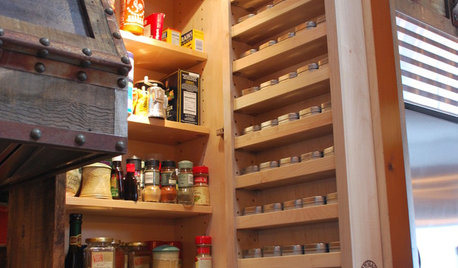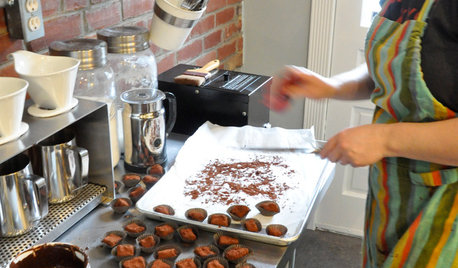Canning Pate and Corned Beef
roof
13 years ago
Featured Answer
Sort by:Oldest
Comments (25)
Linda_Lou
13 years agolast modified: 9 years agodigdirt2
13 years agolast modified: 9 years agoRelated Discussions
Another miss on Corned Beef :(
Comments (11)Thanks for all of the suggestions, I've not considered the brands!! I've moved three time in the last 3.5 years, so different grocery stores. I had a commissary in Maryland and was making a really nice CB up there. It was the whole thing, not just the flat cut, like the fat :). Then in FL I bought at Publix and here in NC there is Farm Fresh. There is a TJ's an hour North of me, along with Target and an actual mall. Also some commissaries in Norfolk. I'll start paying attention to the brand. I've always wanted to wash off the brisket, but thought I was supposed to keep it. I dislike that nasty floating stuff that it creates, from now on I'll be washing it off!!! Christy...See MoreWhy Can't I Make a Tender Corned Beef?
Comments (15)hard boll makes meat tough. If you cook it for too many hours and hours it will disintegrate to just meat strings. I put mine into my Le C dutch oven with enough water to just cover and a quartered onion and the flavor packet....bring it to a simmer and put the whole thing into the oven at about 212 ( half way between 225 and 200) and cook it 4 or 5 hours. Then I take it out and put it on a burner and add my potatoes carrots and when they are nearly done 20 to 30 minutes, I add a quartered cabbage! Ummmm!!!!...See MoreLOOKING for: Canned Corn Beef
Comments (5)This is a recipe that my sister makes but she adds a squeeze dried package of spinach and puts it in a hollowed out round loaf of rye bread....See MoreCorned Beef and Cabbage
Comments (46)Annie1992, thanks you very much. So it is that pink salt that gives it that red color? The nitrate/ite? Your CB and hash look so delicious. It’s 4 deg F here and I would love your CB hash. Friends used to make the best bestest Wisconsin Rubin sandwiches — home made everything. And served with delicious beer. PS Thanks foryour woodchuck help months ago. Apologies for not getting back th you. I developed pesky tendonitis, then some neighbor applied for a permit to recycle parts of Chernobyl, so between tendinitis and efforts to thwart the recycling plant (my euphemism for some outrageous crazy land use), I ran out of the ability to type very much and my attention was focused elsewhere for the most part. And during that time I develop the cold from hell – the cold that wouldn’t leave it. The empty woodchuck trap is still exactly where DH left it. Now with a bit of snow on it. I‘d asked him 100 zillion times to please put it away, but he has his own ideas, apparently. Not being a gardener, he didn’t grasp that a lot of the dug up sand was over some of my bulbs and tuber plantings. Sigh....See Morereadinglady
13 years agolast modified: 9 years agoroof
13 years agolast modified: 9 years agoroof
13 years agolast modified: 9 years agodigdirt2
13 years agolast modified: 9 years agoroof
13 years agolast modified: 9 years agoreadinglady
13 years agolast modified: 9 years agoheather38
13 years agolast modified: 9 years agoroof
13 years agolast modified: 9 years agoreadinglady
13 years agolast modified: 9 years agoLinda_Lou
13 years agolast modified: 9 years agooregonwoodsmoke
13 years agolast modified: 9 years agoJames McNulty
13 years agolast modified: 9 years agodigdirt2
13 years agolast modified: 9 years agoroof
13 years agolast modified: 9 years agoroof
13 years agolast modified: 9 years agodavid52 Zone 6
13 years agolast modified: 9 years agoroof
13 years agolast modified: 9 years agodavid52 Zone 6
13 years agolast modified: 9 years agodigdirt2
12 years agolast modified: 9 years agotrustdolove
6 years agodigdirt2
6 years agolast modified: 6 years agoHU-506525263
5 years ago
Related Stories

KITCHEN DESIGN7 Steps to Pantry Perfection
Learn from one homeowner’s plan to reorganize her pantry for real life
Full Story
KITCHEN DESIGNLove to Cook? We Want to See Your Kitchen
Houzz Call: Show us a photo of your great home kitchen and tell us how you’ve made it work for you
Full Story
KITCHEN DESIGNKitchen Recipes: Secret Ingredients of 5 One-of-a-Kind Cooking Spaces
Learn what went into these cooks’ kitchens — and what comes out of them
Full Story
SMALL SPACES8 Challenges of Cottage Living
‘Small rooms or dwellings discipline the mind,’ Leonardo da Vinci once said. Just how much discipline can you handle?
Full StorySponsored
Zanesville's Most Skilled & Knowledgeable Home Improvement Specialists



readinglady